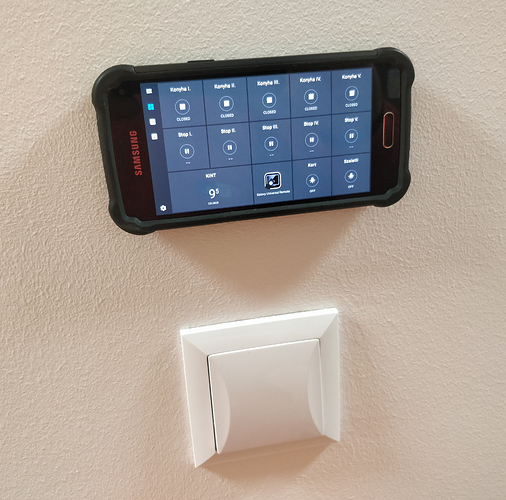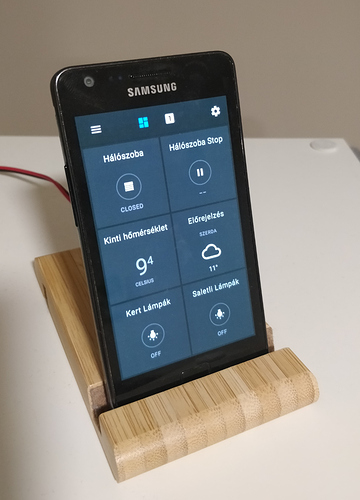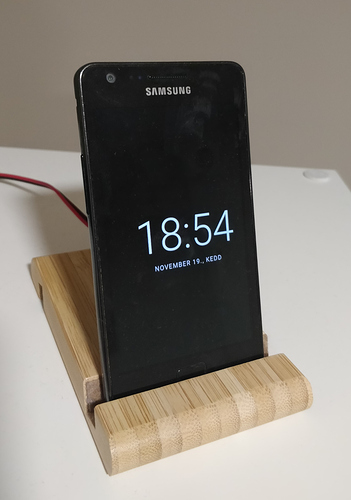This is an old Samsung Galaxy S5 Mini phone.
Mounted on the kitchen wall covering a junction box. Using a $3 hard case from eBay drilled through and fixed to the box using a small screw.
Drawing power from inside the junction box underneath the phone, using a DC5V power supply + a varialble DC-DC converter, set to output 4.1V. Soldered to the battery connection pins (battery taken out completely), the phone boots up showing constant 71% charge.
Rooted and running LineageOS. Working stable for several weeks, showing controls for kitchen:
This is an old Samsung Galaxy S2 phone, again, refurbished.
Using an Ikea-stand (look for “Bergenes”) in the bedroom. Power solution similar to the S5 above, the DC-DC converter almost fits in place of the battery, cable through a hole on the back of the battery cover. Powered by a 5V1A external supply. Rooted running SlimROM. Shows only controls relevant to that part of the house + temperature infos:
This is a wall-mounted PoE tablet from alibaba, model number YC-1011.
Runs wired from a PoE switch. Originally came with Android 5.1, but manufacturer offered upgrade to 7.1. It’s going to completely replace the rolling shutter remote next to it before Christmas. The layout is only for testing purposes. At the right of the screen, web-embedded interface of a WiFi MQTT Control Relay Thermostat:




